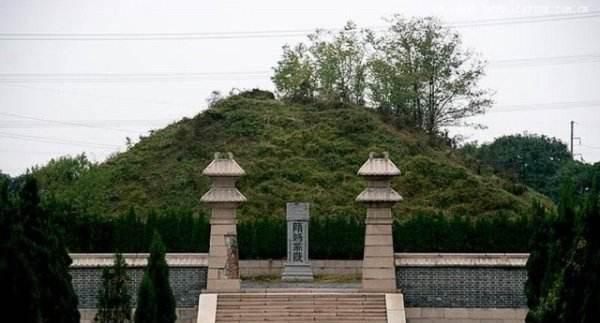In ancient society, the "four treasures of the study room" were indispensable utensils for every reader, and the most noteworthy of them should be the Yantai. In the impression of many readers, the Yantai is a stone carved with grooves and patterns, but in history, there has also been a very literary and artistic Yantai, that is, the Yongyan, but in the end it has disappeared for three reasons. What exactly is it, and what makes it history? Today Xiaobian will reveal the secret to you:

(All pictures in this article, all from the network, thanks to the original author, if you infringe your rights, please contact the author of this number to delete.) The picture has nothing to do with the content, please do not enter the seat)
Before revealing the secret, Xiaobian will first take you to see one of the most representative pieces of Yongyan. In April 2013, in the Hanjiang district of Yangzhou, Jiangsu Province, a property developer was working on two tombs when two tombs were accidentally discovered. But what no one expected was that one of the tombs was excavated by archaeologists and determined that the identity of the owner of the tomb was the infamous Sui Dynasty Emperor Yang Guang.
During the cleaning of the tomb, experts unearthed a ceramic utensil in the burial chamber, which is disc-shaped and has a diameter of about 20 centimeters. Its biggest feature is that there is a circle of sinks at the edges, and then the middle edge is rolled up, the interior is concave, and there is a circle of porcelain feet below. After the research of experts, it was determined that this was a very popular Yongyan from the Southern and Northern Dynasties to the Sui and Tang Dynasties.
According to the literature, "Peiyong" is the place where the ancient Tianzi taught, such as "the university is in the suburbs, the Tianzi is known as the Peiyong" ("Zhou Li"), in fact, to put it bluntly, the Peiyong is the earliest school in ancient times. Therefore, the ancients imitated the appearance of peiyong and created such a brick platform, such as "taking it surrounded by water on all sides, and the garden is like a wall." Later generations became known as BiYong" (Eastern Han Dynasty Cai Yong", "MingTang Dan Ling"). Therefore, the very literary and artistic Yongyan was born, and "became a hit", quickly becoming a "treasure" sought after by the literati and inkers at that time.
When using it, pour water into the groove on the outside of it for the purpose of polishing the pen, and then put the ink ball in the middle depression, and finally add water to soak the ink ball, and you will get the ink for writing in the stone pool. In addition, the multi-legged design of the Yongyan also has a certain stability, and it is also very practical when carrying out, and it is still ceramic, which looks exquisite and abnormal. However, in the middle and late Tang Dynasty, such a Yongyan was extinct, so why in the end? Xiaobian speculates that there are mainly three reasons:
First: the change of ink.
Before the Tang Dynasty, people were still using a thing called ink pills, which did not need to be ground, only needed to be put into the stone, and then add some water to stir to write, but the ink pills had a disadvantage, that is, the color was light, and the ink was not stored for a long time. So later there was an ink block, which was darker in color and had a long retention time. However, the Stone Stone is ceramic, and the surface of the Stone Platform is smooth and not suitable for grinding ink, so people began to use more stone blocks to carve the Stone Platform, and use the stone surface to grind out the fine ink.
Second: "School" changed.
At the beginning, Xiaobian mentioned that the Yongyan was made in imitation of the ancient Yong, and there was a canal in the outer circle to prevent students from "skipping class" during the lecture. But later, with the continuous development of society, the form of "school" such as Peiyong gradually changed, and there were no longer canals outside, all of which were free and open. Therefore, in such a social background, if you remanufacture the Yong yan, it will seem to be a bit out of step with the times, and finally the Yong Yan will gradually disappear.
Third: aesthetic change.
The ceramics are indeed beautiful, but this is limited to the Southern and Northern Dynasties and the Sui and Tang Dynasties. Later, when people used stones to make bricks, they began to carve various exquisite patterns on the outside of the bricks, such as historical allusions, birds and beasts, flowers, insects, plants and trees, etc., making the whole brick platform look elegant and connotative. But for ceramics, carving these patterns on top of them is unlikely. Therefore, people gradually "abandoned" this unsightly Stone Andi, and turned to the embrace of the stone stone platform.
Nowadays, society has entered the paperless office era, Mo said that it is Yantai, even the "four treasures of the study room" will rarely be mentioned, but Xiaobian feels that Yantai, as a representative of traditional culture, no matter what its role is, should not be forgotten, let alone eliminated, because there are too many cultures to inherit.